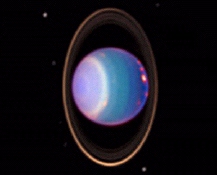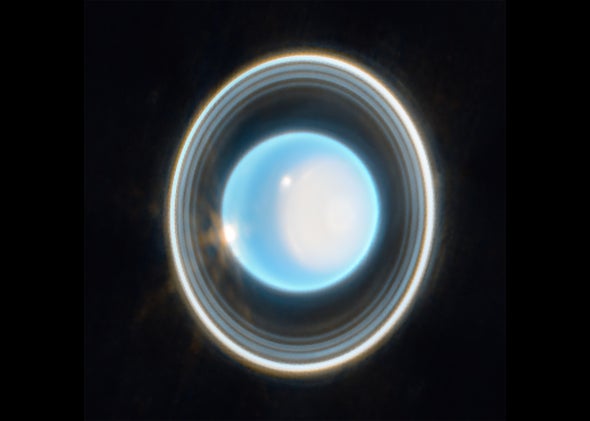
|
Planetary Radio Confusion Tool |

|
||||
|
IR HST image |
IR JWST image |

|
Planetary Radio Confusion Tool |

|
||||
|
IR HST image |
IR JWST image |
This is a tool set up to help Mike Klein and his students investigate
the effects of confusing sources on radio wavelength observations of
the planets, both past and current. The old observations were mostly
done by Mike with the JPL DSN 70-m antenna (DSS14), while the newer
ones are done by the students using the
Goldstone Apple Valley Radio Telescope (GAVRT). More details for
the observations of Uranus can be found in
Mike's 2002 DPS talk.
This tool uses the source list from the
NRAO VLA Sky Survey (NVSS)
to determine what background sources might be near the planet at
some past time when it was observed. The position of the planet at
any given time is retrieved from the
JPL Horizons
ephemeris. Given that position, the tool calculates the increase in
received flux density from the background sources, and from that
calculates a correction to the estimated brightness temperature of
the planet. There are some caveats to the use of the numbers produced
when running this tool:
But it should give a first cut at the corrections to be applied to single dish radio wavelength planetary observations. Just fill in the form below and off you go!


Last Modified on 2023-Apr-12